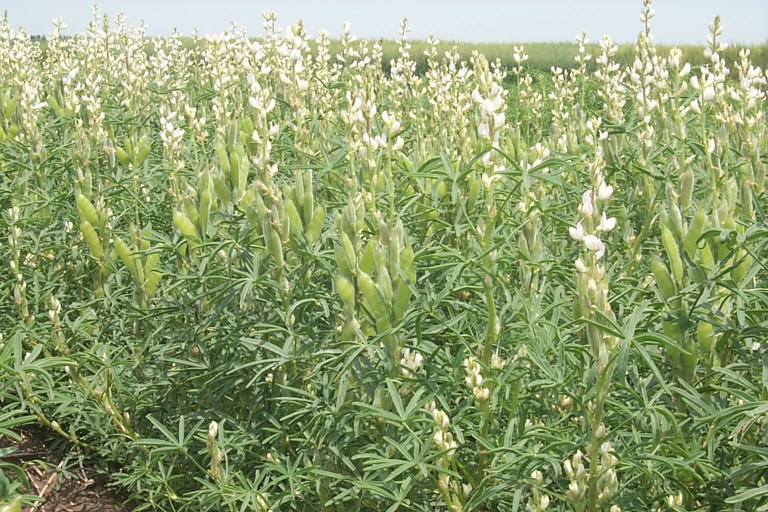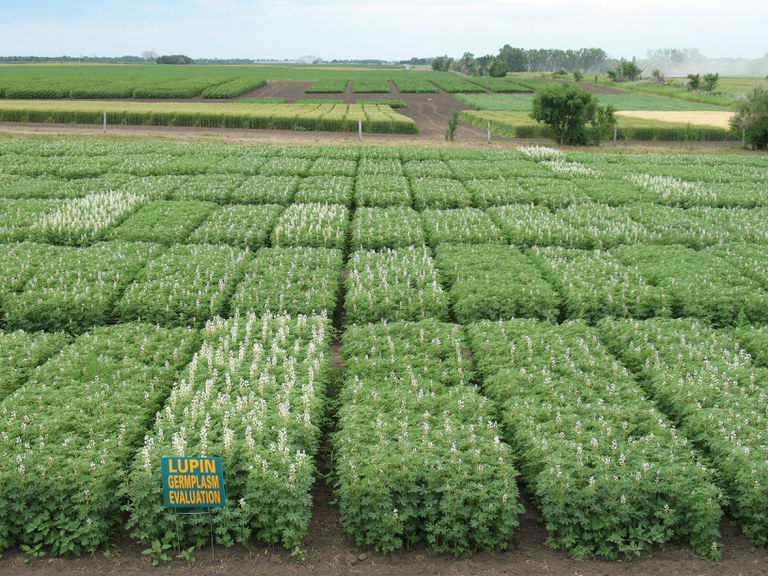Lupin, Renewed Research of an Alternative Crop
The evaluation of new alternative crops has been a long-standing objective within the mission of the CREC’s agronomy research program. These evaluations assess crop adaptation and often follow with studies to refine production practices on those crops exhibiting potential in our region. Crops such as sunflower, soybean, canola and field pea are all examples of crops that at one time were considered a new alternative crop when research at the Center was initially conducted. These crops are now widely grown or common to producers in the region and the state.
One of the alternative crops the CREC is evaluating once again is lupin. Lupin is a cool-season legume that is commercially grown in various regions of the world, notably Australia and some European and South American countries. The crop is primarily of interest due to the high protein content of the seed with levels ranging from the mid-20’s to as high as 40 percent depending upon the species. Most lupins are grown to be used as livestock feed, especially for ruminants. Lupins are used as a human food source although this represents a minor part of the world market.
 Blue, narrow-leaf, lupin approaching end-bloom stage of development.
Blue, narrow-leaf, lupin approaching end-bloom stage of development.
The CREC conducted extensive research on lupin in the late 1980’s to the mid-1990’s on white (Lupinus albus), blue or narrow-leaf (L. angustifolius), and yellow (L. luteus) types. Research continued intermittently in subsequent years. Information gained from this research provided insights into proper production practices and defined that the crop was adapted to our region when specific genetic lines were grown. Lupin varieties with a more determinant growth habit were better adapted than the indeterminant varieties. White lupin was identified as having good yield potential with seed yields of 30 to 40 bushels per acre most common. Plant density studies with white lupin indicated stable yields across a range of populations and row spacings. The high moisture conditions of the mid-1990’s exposed lupins susceptibility to a disease known as anthracnose. Fungicides that are now available may provide an option to manage this pathogen. In crop rotation trials, lupins were shown to effectively fix atmospheric nitrogen and are known to produce proteoid roots to mobilize mineral phosphorus that is otherwise bound. An attractive feature of the crop is that at maturity the seed pods are positioned at the top of the plant supported by strong stems.

Evaluation of experimental lines of white lupin at the CREC.
Current lupin research was re-established to evaluate adaptation of new introductions and to update crop performance data. Experimental lines yielded favorably with the late-season challenges of 2019, as they averaged a yield of 55 bushels per acre. The seed characteristics of lupin may be of renewed interest for human consumption as modern processing technologies create seed product differentiation that didn’t exist previously and demand for plant-based protein and associated products has increased.
Blaine G. Schatz
Blaine.Schatz@ndsu.edu
Director/Agronomist


